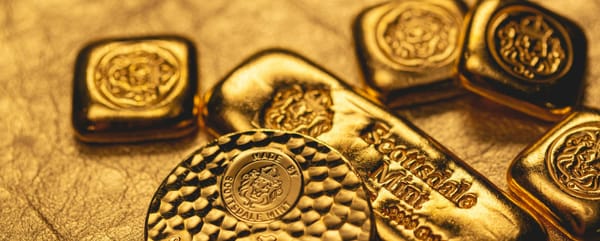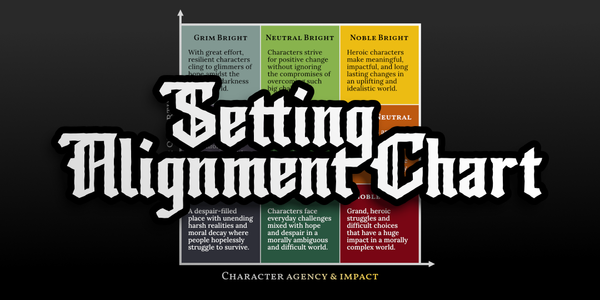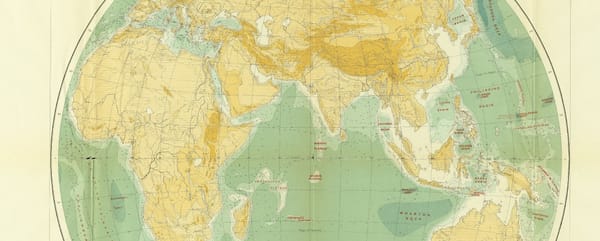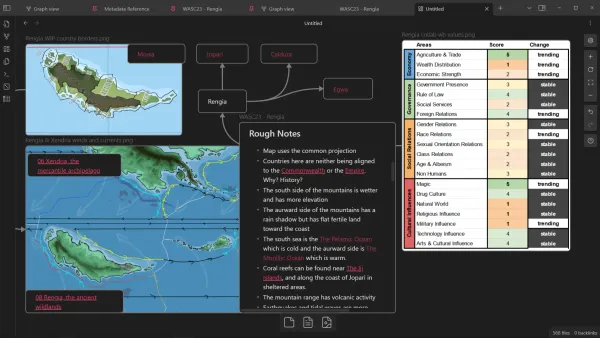⏳ How to make a worldbuilding timeline
8 simple steps to make your worldbuilding timeline, plus my top tips, tools, and resources to help you come up with events and fix any gaps.
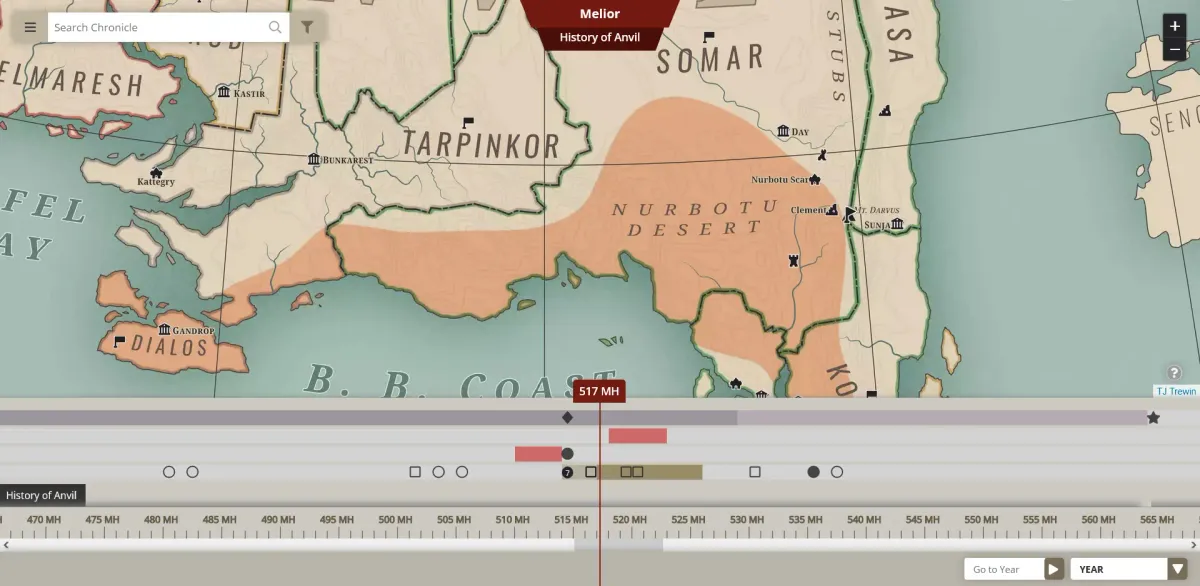
Making a timeline for your worldbuilding is the best way to keep track of events in chronological order. They can be all-encompassing and for your personal reference only, or they can be used as a storytelling tool to see the perspective of the world's events from a particular character, group, or ethnicity's point of view.
Timelines can be large scale or focussed on tiny aspects of your worldbuilding and you can use them in different ways to record things like: the life of an important character or family, the storyline or plot of a novel, the acts of a play or film, the history of inventions and technological advancements, or the sessions of a TTRPG campaign.
I've also included a Timelines Troubleshooting section at the bottom in case you get stuck on ideas on how to name things or have gaps that you don't know how to fill.
⏳ How to make a worldbuilding timeline (8 steps):
- Plan out the scope of your timeline - do you need it to focus on one part of your worldbuilding such as the growth of a civilization or the events of a conflict, or will it be your main timeline that you use for personal reference when recording everything?
- Decide what point of view it's being told from - is it an omnipresent or wiki-style accounting of every event that happened, or is it a recorded history from the perspective of a character or group of people?
- Break it down into sections - this could be in the form of eras, ages, generations, sessions, stages, or acts, depending on what you're using a timeline to illustrate!
- Start with the most significant events - start with adding what you know and make sure to keep it relevant to the scope of your timeline.
- Add placeholders - if you're not sure on the details of an event or when it happened, add in a placeholder roughly when you think it took place. As you expand your timeline you'll be able to make references to it and figure out those missing details!
- Fill in the gaps - start to question why certain events happened and add in the events that lead to them and the results that came afterwards.
- Expand the details - make sure each event has at least a title, a date, and a short summary of 1-2 sentences. You can add extra detail or a full accounting of the event later or in an article!
- Review and revise - check over your events to make sure that they make sense, and add more to it if you want to as your worldbuilding continues.

🧰 Worldbuilding timeline tools
📊 TJ's Timeline Template
There are four main tools that I use for making my timelines. The first is my own custom spreadsheet that I've decided to make public and share with you (it's FREE or pay-what-you-want)! It's where I create my main timeline to keep track of everything that happens in the world as a personal reference.
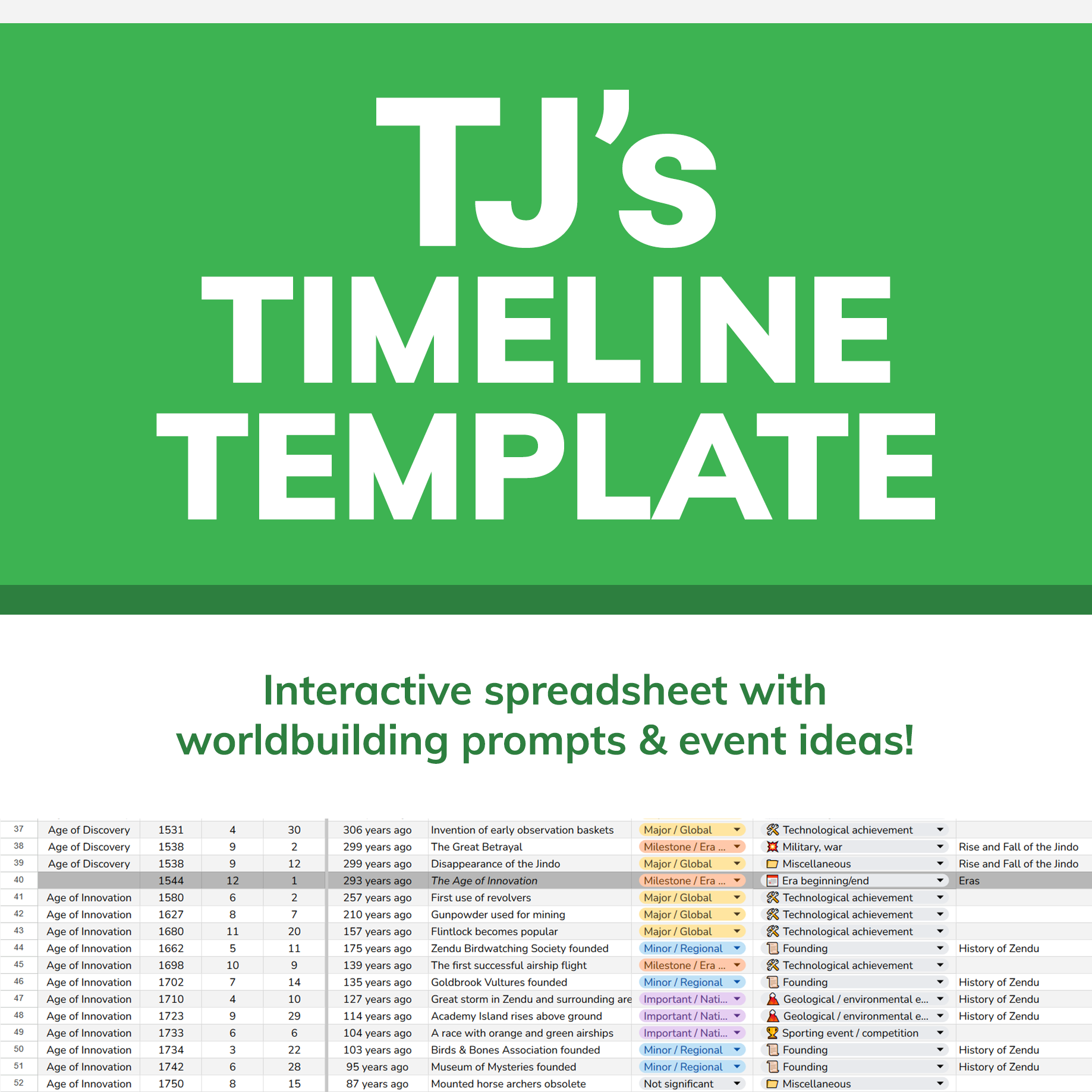
TJ's Timeline Template
- 📊 An interactive Google Sheet to create and organise your worldbuilding timeline
- 📝 10 new writing prompts to get you thinking about your world's history
- 💡 500 event ideas (organised by type) of things you can add to your timeline
I've also made the event types and significance compatible with my next recommendation:
🌍 World Anvil
To present my worldbuilding I use World Anvil, and you can see two examples of my award-winning timelines here: Rise of the Nurbotu Scarfolk (made using the timelines feature), and History of Anvil (made using the chronicles feature with an interactive map).
As much as I love my spreadsheets, looking through a big ol' list of events isn't fun for other people to explore my worlds, so having an interactive timeline that looks stunning and that I can add my own images to is fantastic. The timelines feature had a recent major upgrade and it's really quick for me to add my events in!
🔬 Microscope RPG & Microscope Explorer
When making a brand new timeline and I have no idea what it should contain, I play a solo game of Microscope. It's a timeline building game where you use note cards (or sticky notes) to develop specific passages of time. I find it particularly useful when I need to figure out what happened in a massive empty gap in my timelines!
Microscope Explorer is a supplement that's a lot more worldbuilding-focussed and I love the extra prompts, examples, and thought-provoking questions it provides. Just as a heads up - you need the original Microscope .pdf instructions for some of the different methods of timeline building.
🗃️ The Story Engine: Lore Master's Deck
I loooove The Story Engine decks!! All of them are incredible for quick, fun worldbuilding and making connections between lore, and the Lore Master's Deck is no exception. At the time of writing I've been playing with the closed beta version and it's by far the best deck for making worldbuilding history.
It's a set of square cards with different categories: faction, figure, event, location, object, material, creature, and trait/modifier. Each card has 4 different examples (one on each edge) and you overlap cards of different types to form a connection.
The event cards in particular are really helpful for making timeline events because on one side you have types of event to choose from, but if you use the reverse side of the card it gets you to think about how something was a catalyst that sparked an event, or to consider what the fallout or results of an event were.
📝 Notes
You don't need any fancy tools to make a timeline, you can easily write it down on paper or open up any text editor and write a simple list.
Try using headings to mark eras or sections and use bullet points or indentations for events. You don't even need to use specific dates if it's not relevant or useful to you!

📚 Timeline resources & inspiration
Here are some useful resources to check out when considering your worldbuilding timeline events, how to choose which are important to the story you're telling, and how you can visually present them:
📜 Resources
- Events & Technology (u/OtherAtlas)
- On Worldbuilding: Fictional Histories (Hello Future Me)
- The Histomap (John B. Sparks)
- Histomap of Evolution (John B. Sparks)
- Timeline of Timelines (Daniel Rosenberg)
- Adams' Synchronological Chart (Sebastian C. Adams)
- Chemical element discoveries (ChronoFlo)
✨ Inspiration
- Histography.io
- Carta Històrica de Barcelona
- Witcher interactive timeline (sound warning)
- Kings and Queens of England and Great Britain
- Ancient History timeline
- Sid Meier's Civilization VI tech tree
- History of England (J. Barfield - 1800)
- history of the entire world, i guess (Bill Wurtz)
- Food Timeline

🛠️ Timeline troubleshooting
📏 How long does my timeline need to be?
It can be as long or short as you need it to be!
Make sure your timeline has a scope - if it's a timeline showing the events of a war or conflict then it could include the events that triggered it as well as the immediate aftermath, but it shouldn't include things beyond that in either direction if it isn't relevant.
If you're making a timeline-of-everything for a personal reference, I'd recommend only including the things you've already written in lore, and events that are significant to what you're worldbuilding.
🕳️ How do I fill big gaps in my timeline?
To fill big gaps or "empty time" in your worldbuilding timeline, first see if you can re-adjust the scope of your timeline (or era) so it leaves out those outlier events.
If that's not a possibility, here are some tips for coming up with gap-fillers:
- Check if there are any existing connections that can be made between Event A and Event B. If there are, elaborate on those by adding events, their precursors, and aftermaths.
- If your world has a recurring theme or uses a particular genre, add in an event or two that reinforces that narrative and connect it to both events.
- Alternatively, if you're looking for a list of ideas on types of event to sprinkle in, I've got a big list of ideas for you to choose from in my timeline template!
📅 How do I make a timeline that uses different calendar systems?
If there are cultures or groups in your world that use different calendar systems you could take a few different approaches (these really all depend on what you're using timelines for):
- Pick the most prominent or relevant calendar system for the timeline and use that system numerically, and for events using other systems have a written note of their alternative date.
- Create separate timelines for each calendar system.
- If you're making a personal reference timeline-of-everything, I'd recommend using a standard calendar system for all events and make a note of what the date would be in the local calendar system.
🏷️ How do I name eras?
Naming eras or other sections and passages of time depends on your world and what you're worldbuilding timeline is being used for. Whatever that happens to be, make it match! Add some flair and name eras that suit your genre or any recurring themes you have.
It could be akin to our real world history, if you take a look at Wikipedia's page on Human history you can see massively broad eras like: Ancient history, Post-classical history, and Modern history.
You could name eras after prevalent technologies or discoveries such as: Bronze Age, Iron Age, Age of Sail, Industrial Revolution, or Digital Revolution. Explore some alternatives that fit your setting, perhaps it could include something like the Age of Dragons, the Era of Turmoil, or the Years of Light.
Depending on the scale and purpose of your timeline, you could name it after the reign or rule of a leader or political faction in your world, akin to the Victorian Era or the Song Dynasty.
📍 How do I figure out when the "present day" date is in my world?
It depends on what calendar system(s) you're using in your world, but generally (for most genres) I'd advise looking at real world history as a reference point. Pick a date or year that feels close enough and convert that into your world's calendar.
For my fantasy world of Melior, I picked a random date in the 19th Century (I think it was 1852) and adapted it to my world's most prominent calendar system (the date ended up being year 564 of the 3rd Age). That world's "year 0" would have been somewhere around the equivalent of 1188 when a new standardised calendar was adapted.
If you're making a futuristic setting, or something not resembling anything like Earth in any way shape or form, just pick a number! You can justify the date in any way you see fit :D

💡 Timeline tips and best practises
- Stay within the scope of the timeline - be concise and tell your histories, but don't stray off the path towards worldbuilder's disease of making absolutely everything! Keep it relevant :D
- Reinforce your genre and recurring themes - add narrative flavour to your events by keeping them thematic.
"Individuals bring your history to life. Without people, your history may be interesting but remote. It might not grab you. But introduce one person living through your history and, suddenly, it is personal and meaningful. We can sympathize with people."
- Use your timeline often - reference it and look things up, make your lore interconnected! Add new things only if they're relevant to that timeline.
- Make regular backups - as you should be doing with all of your worldbuilding, make frequent backups in multiple places in case you make a mistake or if it gets corrupted or accidentally deleted.
- Do what works for you - my ramblings here work well for me, and they might work well for you too! But if you try them and it doesn't feel like fun then try something different and use the tools and techniques that work best for you!

